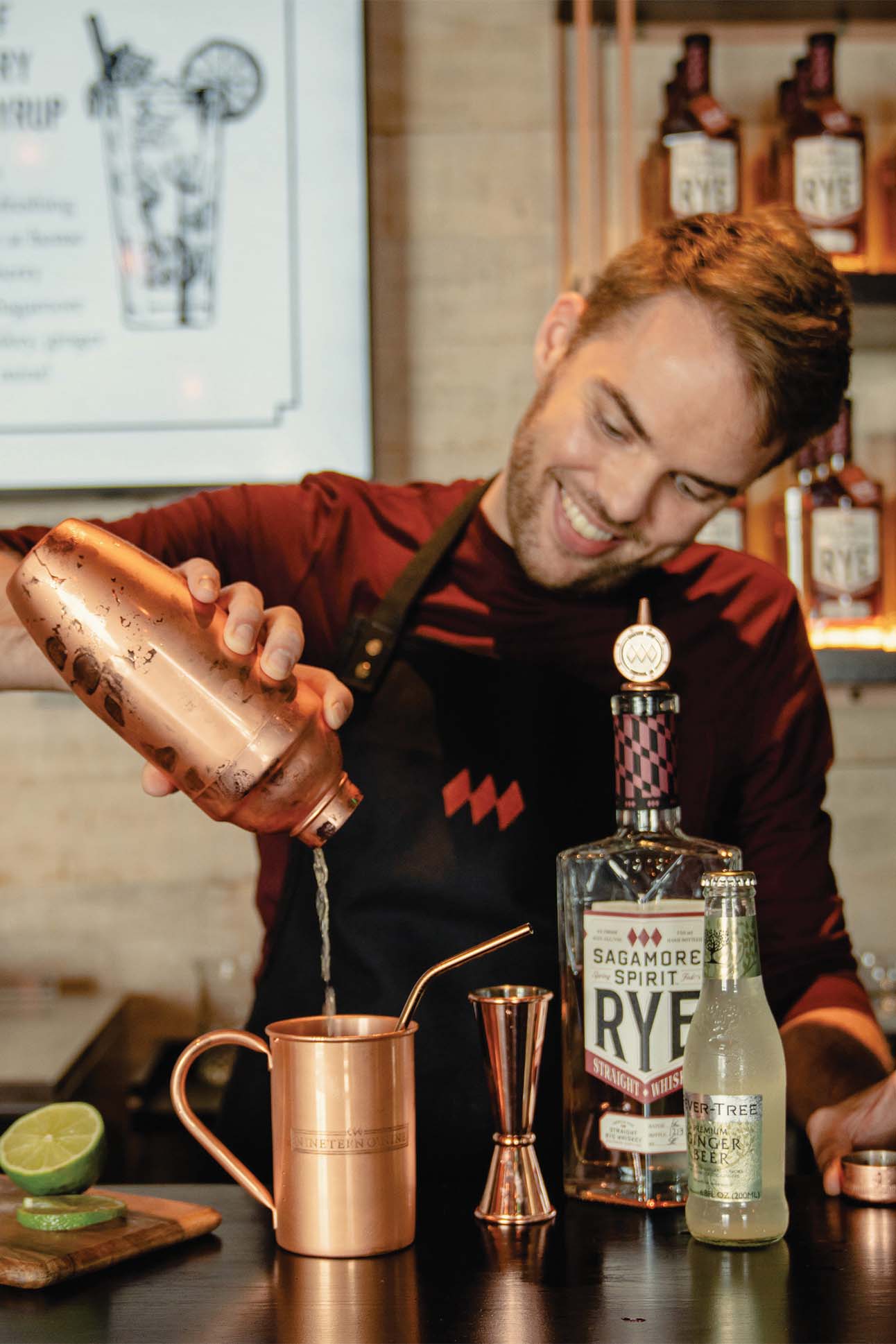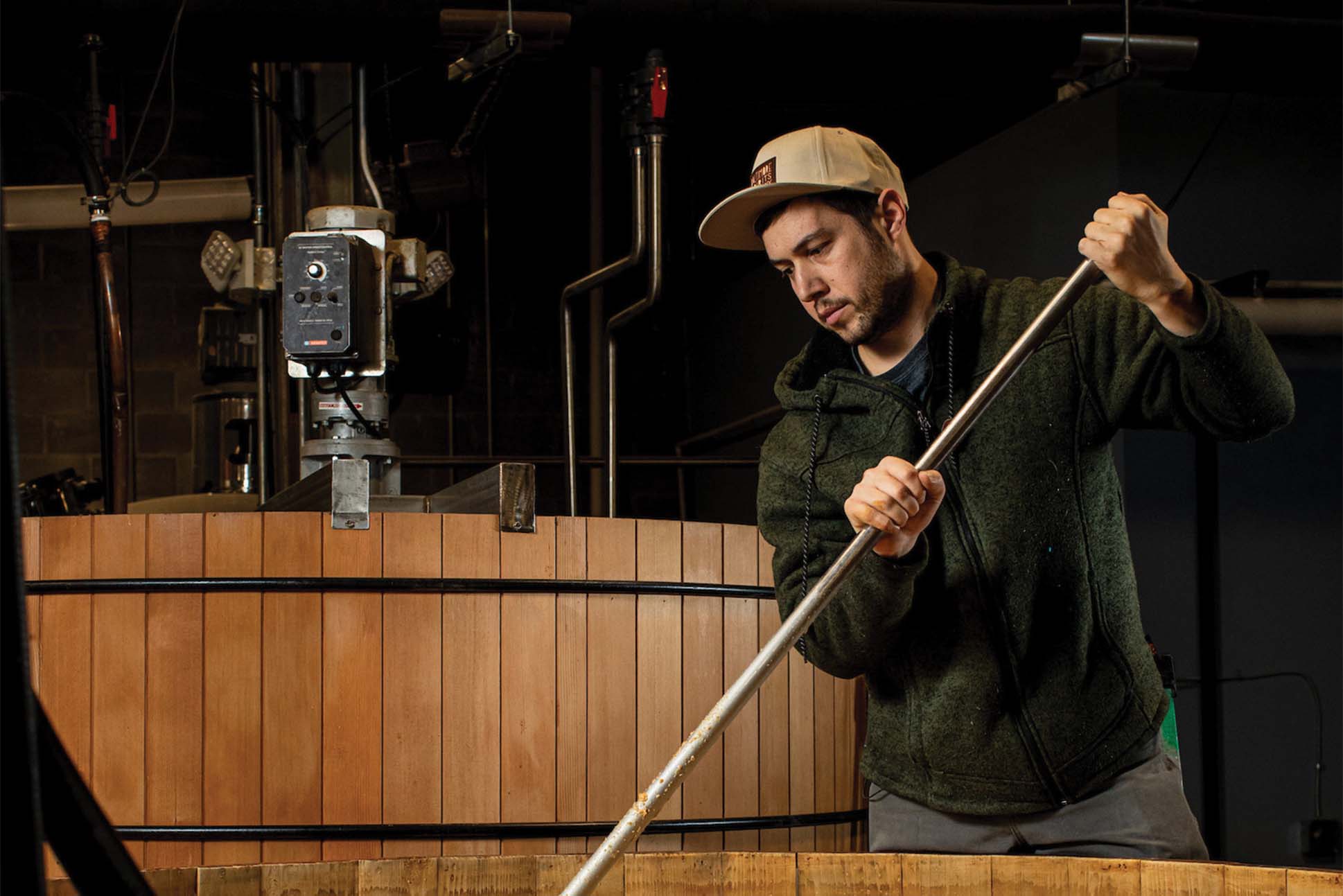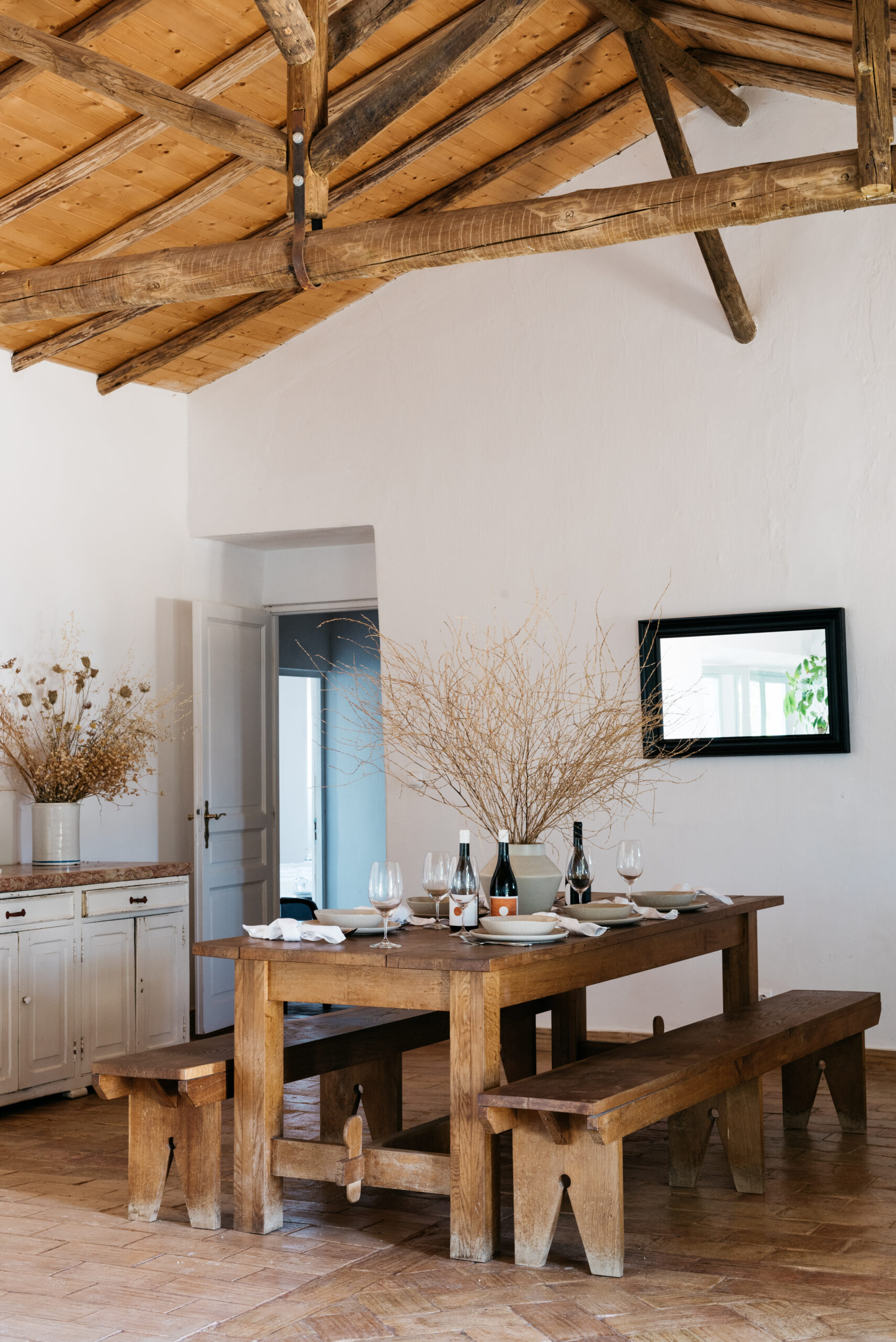Text by Rebekah Kirkman
Like many good things, rye whiskey was invented in desperation. During the American Revolution, British naval blockades prevented colonists from importing or fermenting their preferred rum and brandy. The colonists weren’t about to quit drinking, though, so they looked to the Scotch-Irish settlers’ traditional pot-distilled whiskey, using a resilient grain called rye.
Rye whiskey accrued even greater popularity during another war time—the Civil War—and Maryland, because of its proximity to the nation’s capital and its position in trade routes, became one of the top producers of rye in the country.
That was only up to the early 20th century—Prohibition, the Great Depression, and a couple of world wars dismantled local production, and the government incentivized farmers and distillers to move production down to Kentucky, where corn grew better and distilled into a sweeter whiskey that became known as bourbon. By 1972, rye distilling had left Maryland entirely.
But Maryland rye never fully left the collective consciousness, and some brands elsewhere continued to produce a “Maryland-style” rye, a debated term that typically signified a slightly sweeter taste than the spicier, higher-rye Pennsylvania varieties. Within the last decade, a handful of new distilleries have popped up, many of them drawing on tradition while concocting new expressions of Maryland rye.
Max Lents, a co-founder of the Baltimore Spirits Company, one of the first distilleries to emerge in Maryland in 100 years when it opened in 2015, noticed the prevalence of rye when he moved to Baltimore from Texas in 2008. Ordering whiskey at bars, Lents says, “if you didn’t specify, there were a lot of bars that would just serve you a shot of Pikesville rye.” The legacy brand of Pikesville had long before left its namesake town north of Baltimore, in 1972, and was eventually acquired by a Kentucky distiller. But its local ties remained strong.

Lents developed his own appreciation of the spirit, learning more about its history while working in bars. He and a couple of friends, future Baltimore Spirits Company co-founders Eli Breitberg-Smith and Ian Newton, had also gotten into the home-brewing craze of that era, which eventually morphed into an interest in small-batch distilling. The three started working on a business plan in 2013 with the goal of bringing Maryland-made rye whiskey back to the state.
“The funny thing about whiskey is, you don’t know until it comes out of the barrel what it’s going to be like,” Lents says. He and his co-founders trusted their experiments and their production methodologies, and they knew they wanted something that tasted good and had character right out of the still, before it went to age in charred oak barrels. Epoch’s current formulation is 100% rye (sourced primarily from Maryland-grown grain), a quarter of which is unmalted, imbuing it with brightness. When Epoch entered the market, it was the first rye made in Baltimore in 50 years. Since its release, Epoch has won numerous top awards at international competitions, and the recipe has mostly stayed the same, with minor tweaks.
The resurgence of small-batch distilling is related to a wider industry trend of looking back to get ahead: in the mid-aughts, high-end bars were rethinking their cocktail menus after rediscovering recipes by Jerry Thomas, whose 1862 book “The Bar-tender’s Guide” was the first of its kind published in America. His recipes—for old fashioneds, Manhattans, and other classics that emphasize the spirit’s taste—often called for rye.
Generally, the designation of “Maryland rye,” Lents says, was more of a “claim of quality based on heritage and history” rather than a certain recipe or flavor profile—the same way that Kentucky bourbons can vary widely.
Sagamore Spirit Distillery has also built upon this local heritage. Founder Kevin Plank, the CEO of Under Armour, was looking into the history of the horse farm he’d purchased in 2007 outside of Baltimore, and discovered that it lay above a limestone shelf. The springhouse on the property, built in 1909 by a University of Maryland researcher, still bubbled with fresh water—heavy metals filtered out by the limestone, ideal for cutting whiskey. Plank and business partner Bill McDermott started kicking around the idea of starting a whiskey distillery and founded Sagamore Spirit in 2013.

To build up the brand, they sold rye that was contract-distilled through MGP, a major Indiana-based distiller, but they have been producing their own product in-house since the distillery opened in April 2017 in South Baltimore, not far from where the city’s historic distilleries once operated. Ryan Norwood, Sagamore’s vice president of operations, says about 25 workers comprise the distillery crew today, processing, fermenting, distilling, barreling, and then packaging the rye. Sagamore’s flagship rye is a blend of two recipes—one with a high percentage of the grain (95 percent), the other lower (52 percent)—allowing the distillers to create a “balanced” flavor profile.
In 2018, Sagamore began sourcing its grain from local farmers; that year, the distillery brought in about 35,000 pounds all from within the state. In 2023, Norwood says, they harvested about 1.2 million pounds of locally grown rye—an amount indicating, among other things, a growing demand for the spirit. Though rye grows well in Maryland, there are few incentives for farmers to grow it compared to crops like corn, which the government subsidizes. Committed to local sourcing, Sagamore Spirit supports rye farmers by purchasing the seed and fertilizers up front, then paying a set price at harvest.
Sagamore’s most recent release is their first all-Maryland-distilled, and is available internationally—an opportunity to spread the gospel of Maryland rye to wider markets. Norwood says the local promotion stems from Plank’s desire to create “a destination, somewhere [travelers] can pull off, stop, and learn about the history of Baltimore.”
In Frederick, about 50 miles west of Baltimore, stands another figure of the rye renaissance: Tenth Ward Distilling. Founder Monica Pearce, who grew up nearby, has worked in hospitality since age fourteen, and started bartending at 18. About 10 years later, in 2016, she started the distillery.
“There were a ton of breweries popping up around,” Pearce says. “The craft brewing scene was booming.” But she didn’t want to do beer: “I’ve always been a big whiskey fan.”

Tenth Ward started production in a 1,600-square-foot facility. The company now operates from a 9,000-square-foot distillery and a separate 6,000-square-foot tasting room, serving their rye, gin, absinthe, bourbon, and canned cocktails. The rye whiskey is made from 100% malted rye, grown and malted at a local farm that’s been cultivating the same strain of rye for three generations. “It’s an original Maryland rye from the early to mid-1900s that we can carry over in our product line,” Pearce says.
While building her business, Pearce has been an advocate for the industry. She lobbied the state with industry peers to change a law to allow distilleries to serve a “full pour,” the way breweries can serve a full pint. She also testified last year in support of a bill to declare rye Maryland’s state spirit, a designation that supporters say could boost tourism, similar to the way Kentucky has promoted its bourbon history.
Maryland distillers see the growth of their industry and the resurrection of the heritage spirit as a tide that may lift all boats. Partnerships with local farms have been promising, Pearce says: “One of our farmers now can solely support himself off of just selling to distilleries.”
Crucially, modern distillers aren’t fighting each other to claim authenticity over what constitutes true “Maryland rye.” The spirit was always a collection of multitudes, influenced by the tastes and times around it, connected by a common place. Beyond any particular method or mashbill, Maryland rye is a preservation of history, made new.




